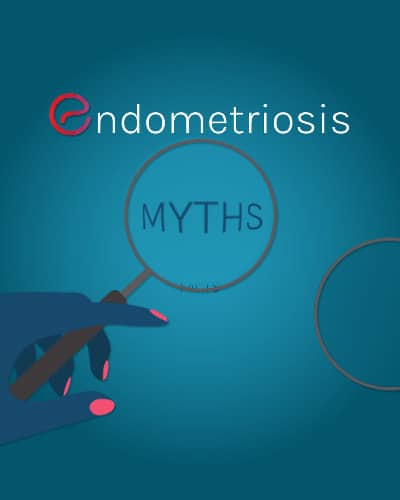Myths and Facts About Endometriosis

Myths about endometriosis are everywhere. As a result, many women struggle to find accurate information about the disease, its diagnosis, and the treatment options available to them. Here are some common myths about endometriosis, and the facts to back them up or debunk them.
Endometriosis is just a bad period
Many women experience heavy bleeding or painful periods as a result of endometriosis, adenomyosis, or uterine fibroids. Painful periods don’t necessarily mean that one has the disease. However, since endometriosis can cause many other symptoms and complications if left untreated, killer cramps should not go unchecked. Women with endometriosis often have menstrual periods that do not allow them to attend school, work, or attend to their other daily duties or live a normal social life. But this is NOT normal! So, endometriosis is not just a bad period.
Painful periods are normal
Pain is a serious symptom and should not be ignored. Endometrial lesions and fibrous cysts can affect the nerves where they are located, causing extreme pain. While painful periods do not always indicate endometriosis, anything more than mild discomfort should be discussed with a doctor specializing in endometriosis.
On the other hand, not all women with endometriosis experience painful periods. So, having a pain-free period does not necessarily mean that a woman does not have endometriosis.
Young women cannot have endometriosis
Endometriosis can affect teenagers, adolescents, and young women. Women can develop endometriosis as soon as menstruation has begun. While most women begin to have symptoms of endometriosis in their 20s or 30s, symptoms can also develop earlier, even as early as the first menstrual period.
Getting pregnant or going through menopause cures endometriosis
Another common myth is that getting pregnant cures endometriosis. However, while many women see a decrease in their endometriosis symptoms when they are pregnant, pregnancy does not cure the disease. Depending on the size and location of the endometriosis lesions and cysts, pregnancy can even be dangerous for women with endometriosis who have an advanced-stage disease and multiple prior surgeries. These women should receive treatment from a doctor during their pregnancy that is familiar with high-risk pregnancies.
Similarly, many women experience a decrease in endometriosis symptoms after menopause. However, this does not mean that the endometrial lesions are gone. Women may continue to have symptoms, especially if there is scarring present (as scar tissue that may have formed is not hormonally responsive). Some women who did not have symptoms of endometriosis prior to menopause may find that symptoms begin after menopause. This is more common in women who are taking hormone replacement therapy. However, it can also occur even in women who are not taking hormones.
Endometriosis only affects the pelvic region
The lesions caused by endometriosis usually develop in the abdomen and pelvic region. However, they can develop elsewhere as well, such as the lungs. These lesions can be especially serious as they may interfere with organ function and cause symptoms that are not obviously related to endometriosis. Again, knowing about the disease and seeing a doctor specializing in the disease is of paramount importance to avoid serious complications caused by this very complex disease.
Get a Second Opinion
Our endometriosis specialists are dedicated to providing patients with expert care. Whether you have been diagnosed or are looking to find a doctor, they are ready to help.Our office is located on 872 Fifth Avenue New York, NY 10065.
You may call us at (646) 960-3080 or have your case reviewed by clicking here.